Appreciation and production of Italian Coffee-Basics
Italian Coffee
Italian coffee really stands out from the invention of the pressure steam coffee machine began. That is, the beginning of the last century. This machine produces coffee that is extremely strong, five to six times stronger than regular coffee, and it is Espresso, customarily called super espresso. The taste of this coffee is very special,"bitter" and "astringent" when entering the mouth. The reason why quotation marks are added is because I think this is the unique taste of Espresso, which is very stimulating to taste buds, not uncomfortable bitter and astringent. After a moment of taste, it feels slightly sweet and has an endless aftertaste.
It is recommended that no sugar be added (sugar can remove bitterness). If you taste the bitterness of a drug or other bitter food, and it stays in your mouth, then coffee has a problem. Espresso should be tasted hot, with minimal bitterness and thick flavor. The upper layer must have coffee "oil," the color is yellow, the foam is delicate, close to smell strange fragrance. There must be no sour taste (only a few coffee beans have a slight sour taste). I hate paper cups!! What a waste!
ESPRESSO
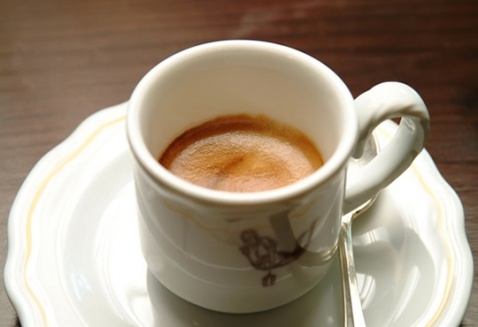
Milk is indispensable to Europeans, and it combines perfectly with coffee. Latte means milk, and this coffee drink is a natural extension of Espresso. Milk removes the astringency of coffee, blends in milk fragrance, tastes excellent, and is most acceptable.
Latte has a stronger creamy aroma than regular coffee with milk, no "watery feel," and a relatively smooth taste. The container can be a china cup or a glass, I suggest a china cup, in Italy, Latte in a glass is called Latte Macchiato. It is suggested that the temperature should not be too high, so as not to burn the mouth. Its real name is Caffèlatte , we call it latte!
Caffèlatte
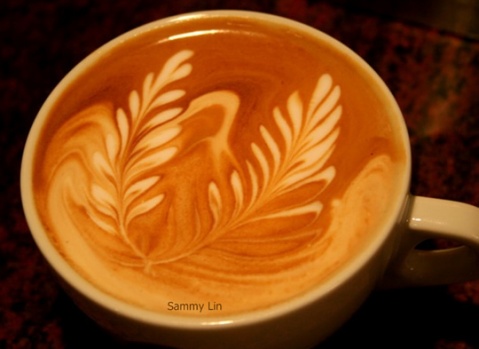
Here's a grand introduction to Cappuccino, which is popular all over the world
Cappuccino didn't really become known until the 1990s, when Starbucks was promoted, but it was Starbucks 'commercial promotion that made this distinctive coffee drink unrecognizable. I will strongly protest in the next post!
Cappuccino's biggest feature is its Foam-milk foam. A good Cappuccino must have a smooth, smooth texture, wonderful foam (I hate to use the word "foam," a good foam is one that doesn't have any bubbles) and a good mix of milk and thick Espresso. One serving of Espresso is recommended with two servings of milk and two servings of Foam. In fact, milk and Foam are combined in the Cappuccino process, and the configuration data above is only an estimate.
If you receive Cappuccino from a barista, drink it immediately; if you receive Cappuccino from a waiter, stir it before drinking. Because it doesn't take half a minute for Foam to separate completely from milk, you can't taste Cappuccino if you don't stir it. It passes through your lips-teeth-tongue-throat and eventually warms your stomach.
Cappuccino temperature should not be high, it is best to drink dry without burning. When drinking, it should be coffee mixed with milk mixed with Foam trinity, pure as old wine, smooth as silk, before drinking the last sip, you still want a cup of words, indicating that you have encountered good things. If it's too hot, it's bad; too much milk, too little Foam, it's no different from Latte; milk foam is too thick, it ruins the taste; coffee is tasteless, Espresso is bad.
If you drink a Cappuccino with a beautiful pattern, taste it carefully. There are only a few baristas who can make flowers for Cappuccino, and they must have used their heart when making flowers, so the quality of coffee will not be poor.
CAPPUCCINO
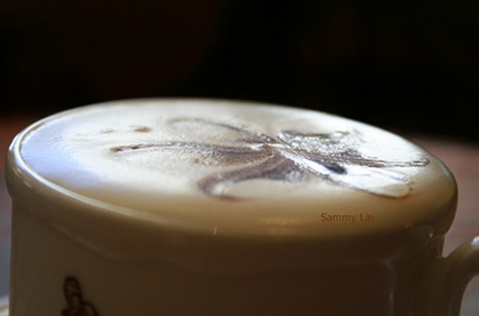
Finally, Macchiato--a favorite for heavy tasters
Drinking this coffee feels the same as drinking vodka for alcoholics, strong Espresso with half a serving of milk and Foam, no astringency. My guests usually pour an entire sugar packet into a small coffee cup, stir it, and drink it down. It feels like a word------
Personally, I think this is the worst coffee to get, it must be a good Espresso and a good Foam, because the people who drink this are experts and cannot be fooled.
MACCHIATO
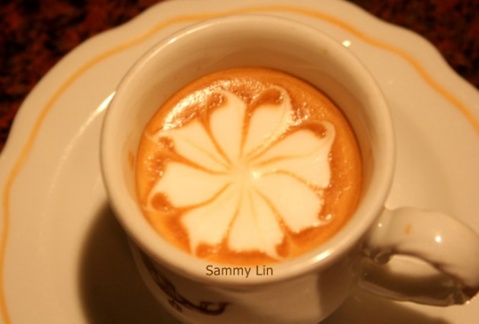
There are four essential conditions for making Italian coffee:
I. Machine
A good machine is essential, professional and domestic of course there is a difference. Then according to individual specific requirements and conditions as far as possible with good machines (high power), in this no advertising.
Second, coffee beans
Espresso coffee beans are specially processed and cannot be replaced by regular coffee beans. Espresso coffee beans at different price points have very different flavors.
III. Water
This is a link that is easy to ignore, how can the odorous water guarantee the quality of coffee? New York water is great, but I double filtered it.
IV. Barista
Practice more, accumulate experience, learn from others, accumulate thick to thin hair.
Important Notice :
前街咖啡 FrontStreet Coffee has moved to new addredd:
FrontStreet Coffee Address: 315,Donghua East Road,GuangZhou
Tel:020 38364473
- Prev

Nine Tips for Coffee floral
1 milking: the most important technique, although not very advanced, but requires a long time of practice, requires fine and smooth milk foam, do not have large foam. 2 milking angle: it is best to milk at an angle of 45 degrees with the steam sprinkler, depending on the thickness of the foam according to the fluctuation. Three hearts! The most basic flower drawing technique, if friends want to do better, they must put the shape of the heart
- Next
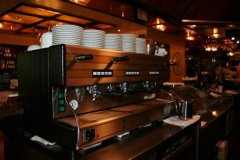
Appreciation and production of Italian Coffee-introduction
This is the machine I use. It doesn't turn off for 24 hours. It takes half an hour to warm up every morning. It's my concubine. I can feel the steam on the machine when something goes wrong. I can heat the cup. The quality of ESPRESSO actually depends on the quality of the machine-the quality of coffee beans-the thickness of coffee powder-the situation that water is not easy to change under other conditions.
Related
- How did the Salvadoran coffee industry develop in Central America?
- What exactly does the golden cup extraction of coffee mean?
- The Origin of Coffee flower
- [2023 Starbucks World Earth Day] there are more meaningful things besides free Starbucks coffee!
- What kind of coffee is there in Spain? 9 Flavors of Spanish Coffee
- Aromatic African coffee| Kenya's coffee culture and historical production area
- Liberica Coffee Bean knowledge: the characteristics of Liberian Coffee beans of the three original species of Coffee beans
- The origin and formula of Spanish latte introduces the taste characteristics of Bombon coffee in Valencia, Spain.
- How to adjust the solution of over-extracted coffee
- What is the tasting period of coffee beans? What is the period of coffee and beans? How should coffee wake up and raise beans?

